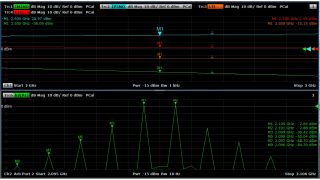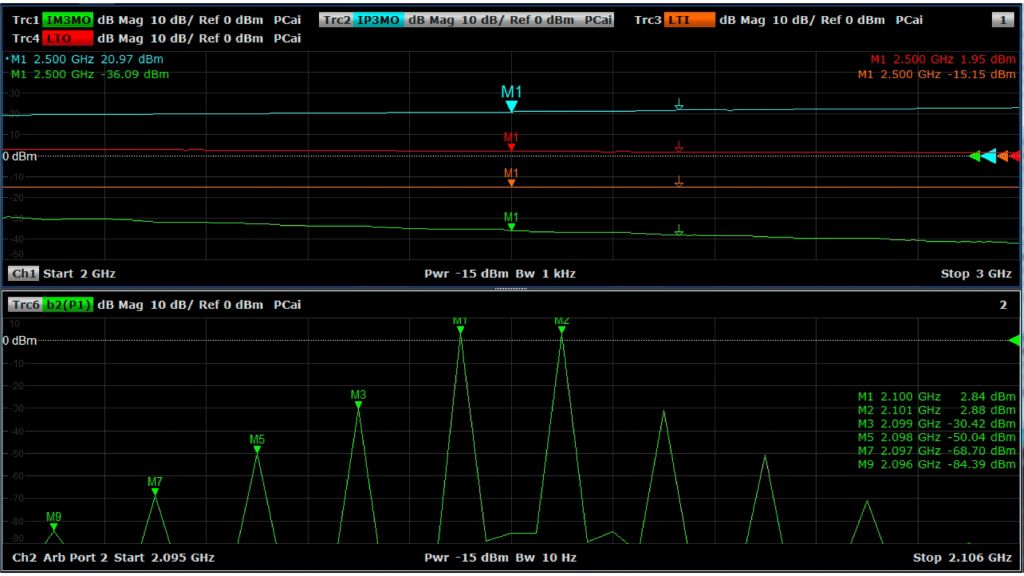Intermodulation measurements on RF amplifiers
The R&S®ZNB vector network analyzer is easy to configure and calibrate using the built-in intermodulation wizard.

The R&S®ZNB vector network analyzer is easy to configure and calibrate using the built-in intermodulation wizard.
For a typical RF or microwave amplifier handling multiple carriers simultaneously, it is essential to know the limits of operation resulting from nonlinear effects in order to avoid degraded system level performance. An established approach to assessing device nonlinearity is to measure 3rd order intermodulation products, from which the 3rd order intercept point is derived. Intermodulation is traditionally measured using two RF generators, each delivering a tone. The tones are equal in power but slightly offset in frequency. They are combined into a single path and applied to the device under test (DUT). A spectrum analyzer that is connected to the DUT output measures the wanted RF tones as well as the nth order intermodulation products generated in the DUT. Time-consuming calibration is needed to compensate for cable and combiner losses. Multiple RF connections need to be made, increasing the risk of error. Moreover, swept-frequency and swept-power measurements performed to characterize the DUT require synchronized operation of the test equipment, necessitating a control computer and software, which adds to complexity and cost.


Typical amplifier 3rd order intermodulation performance
Featuring highly linear receivers and generous output power, the four-port R&S®ZNB vector network analyzer is ideal for performing intermodulation measurements. Equipped with a second internal source and using a USB connected R&S®NRP-Zxx power sensor, the R&S®ZNB provides a complete test solution for efficient and accurate measurement of intermodulation products and calculation of intercept points, requiring no more than an external RF combiner. Using the analyzer with a second internal generator also reduces measurement time by a factor of approx. ten compared with a remotely controlled external signal generator, thereby enabling realtime DUT analysis. The versatile R&S®ZNB vector network analyzer supports swept-frequency and swept-power measurements and analyzes the output spectrum for two fixed-frequency continuous wave (CW) tones, providing considerable flexibility in analyzing intermodulation products. The R&S®ZNB has an integrated intermodulation wizard. This intuitive tool guides the user through four simple steps to efficiently configure the instrument to measure odd-order intermodulation products (3rd, 5th, 7th and 9th) and calculate the associated intercept points.


The intermodulation wizard is an intuitive tool guiding users step by step through instrument configuration.
After selecting the desired option in step four, the R&S®ZNB closes the intermodulation wizard and presents the results for the selected parameters in the form of labeled traces. The analyzer’s touchscreen interface makes it quick and easy to analyze displayed results. For example, users can add markers and change the relative references of traces, e.g. to measure intercept points relative to the DUT input or output.


Intermodulation measurements made easy – with the R&S®ZNB vector network analyzer
The versatile R&S®ZNB vector network analyzer with a second internal generator (four-port model) and built-in intermodulation wizard provides a quick, efficient and accurate single-instrument solution for analyzing the intermodulation performance of devices.